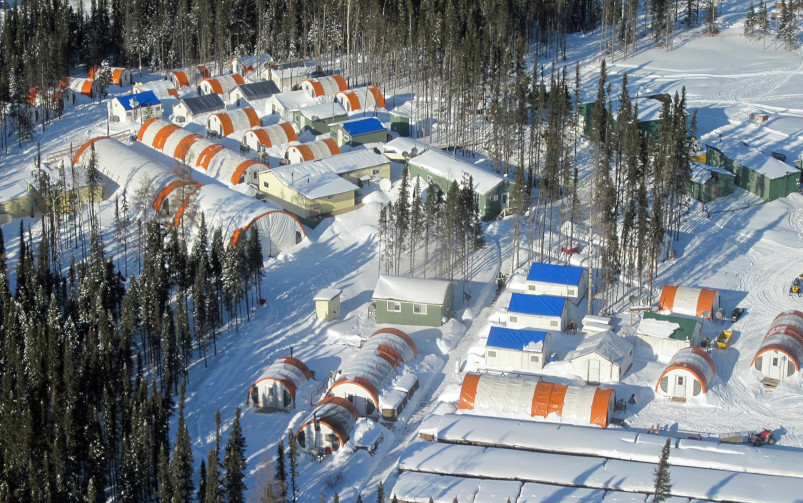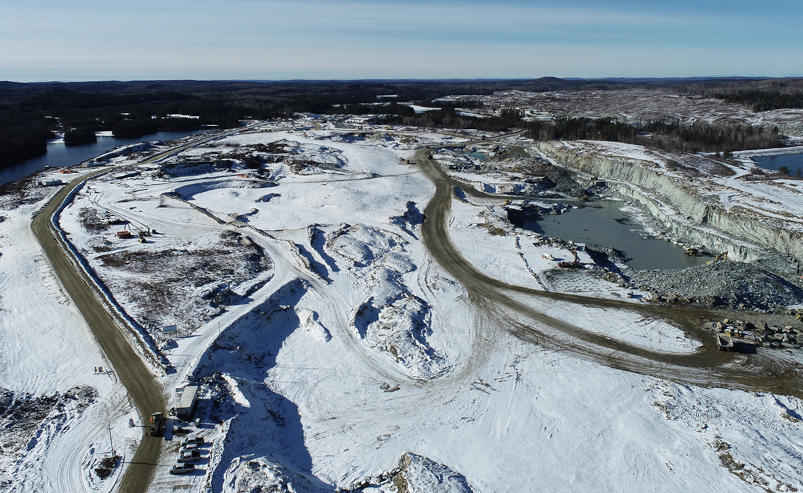The report found that an average of 27 per cent of energy consumption at mine sites is devoted solely to communution across five notable commodities. Courtesy of Iron Ore Company of Canada.
An independent report commissioned by the Weir Group and authored by Marc Allen, director of the Coalition for Eco-Efficient Comminution (CEEC), was released on May 10, analyzing findings from 40 published studies on mining energy usage. The report found that comminution processes are the largest single user of energy at mining operations, and therefore represent an area in which small improvements in efficiency can have big effects on emissions-reduction.
The context of the report is the near-global shift in emissions targets that is necessary in order to bring them in line with the Paris Agreement’s goal of limiting global temperature increase to less than two degrees celsius. The report projects a significant increase in demand for commodities that are used in the production of necessities for the green economy and decarbonization, like electric vehicles, grid support batteries, renewable energy plants and more energy-efficient infrastructure.
The report looked at five such commodities that are set to take advantage of this growth in demand: copper, gold, iron ore, nickel and lithium. The report concluded that, since comminution and mineral processing is the single biggest user of energy in a mine site, it is “A natural target for identification of energy savings opportunities able to have the largest impact.” According to the data studied in the report, mineral processing consumes between 30 per cent and 40 per cent of total energy in copper mining, regardless of the configuration of the mine. In the case of nickel, that number rises to “[a] 50:50 split between mining and processing.” For lithium, processing accounts for about 27 per cent of energy consumption. The review of gold production showed that comminution represents about 26 per cent of the total energy expenditure for both underground and open-pit gold mining sites. Finally, iron ore is a particular case where only magnetite, as opposed to hematite, processing requires comminution, where it accounts for 43 per cent of energy expenditure.
Related: An update to the Mining Association of Canada’s standard changes how companies should tackle risks and opportunities from climate change
The final estimate for the proportion of energy consumption devoted to comminution activities across all five commodities is 25 per cent. This is when considering that diesel energy is spread out over multiple individual pieces of equipment and multiple equipment types, according to the report, comminution has advantages as a target for energy optimisation since the process is carried out by “a small number of equipment types with high energy consumption per unit.”
Given the substantial proportion of energy expended solely in this phase of mining, and given the fact that these minerals will place greater energy demands on mining companies in the shift towards green tech, the report goes on to offer recommendations for optimization in comminution. Optimizing the comminution process, replacing traditional grinders and mills, using big data or artificial intelligence to make decisions and the use of pre-concentration of ores prior to processing, and more, can lead to energy savings or improvements to efficiency, according to the report.
The CEEC said in a press release that the findings of the report reconfirm comminution as a key target for energy and emissions reduction efforts. The CEEC has publicized that up to three per cent of global electrical energy is used in comminution when taking into account all mined commodities, quarrying and cement production, emphasizing the large-scale benefits that small improvements in comminution efficiency could have in supporting the global transition towards net zero emissions. In the release, the note report author Marc Allen has stated that “A relatively modest five per cent improvement in comminution, across the industry, may result in emissions reductions close to the total emissions for New Zealand,” highlighting the major benefits that even small changes in this particular area of mining operations can have on the quest for emissions reduction.




